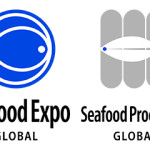Demand for salmon continues to be strong globally, but the dual markets of the United States and China have salmon sellers licking their lips at the massive opportunity they represent.
Salmon’s position as a healthy staple is driving interest in the species worldwide, but the low rates of per capita consumption in the U.S. and China show that there’s still plenty of room to grow the markets in both countries, a panel of salmon experts speaking on Wednesday, 16 January at the Global Seafood Market Conference in Coronado, California, U.S.A., agreed.
Natural limits in production from wild-catch salmon fisheries, and more complicated set of restrictions on farmed salmon production, means much of that demand likely won’t be met anytime soon. As a result, prices for salmon are rising. The average price of a pound of salmon in September 2015 was USD 4.12 (EUR 3.62) in 2015 and three years later, in September 2018, the price had risen to USD 5.80. (EUR 5.09).
“That’s the outcome of that gap between supply and demand,” Andy Wink, the executive director of the Bristol Bay Regional Seafood Development Association, said.
Wink is especially bullish on the potential for the United States to become a bigger consumer of salmon, even though it already represents the largest salmon market in the world.
“There’s huge potential for salmon in the U.S.,” Wink said. “If you look at how much consumption there is right now in the European Union, you can see where the U.S. market can go. It’s amazing to believe that U.S. has a lot of growth left in it, but it does.”
Imports of farmed salmon into the U.S. were up significantly both in 2018 and in prior years, as the total volume approached 400,000 metric tons, worth as much as USD 4 billion (EUR 3.5 billion). However, the rate of increase is not fast enough to keep up with potential demand, according to Wink.
“Farmed production increased in 2018 but the outlook is for sub-five percent, and it’s not clear how we can bust out of that paradigm,” Wink said. “It will keep growing, but it might be smaller than it has been historically.”
Key areas increasing farmed salmon production include Chile, Canada, and the United States itself, Chile expects to add 60,000 metric tons of salmon production in the next two to three years, as more farms are opened in the remote Magellanes region of the country. Canada has two large farm projects under development in Newfoundland expected to add another 30,000 metric tons. And three recirculating aquaculture systems in the United States in varying levels of development are each hoping to produce between 10,000 and 100,000 metric tons of salmon annually.
But even with all the added capacity, global demand for salmon will continue to outrun supply, according to Wink.
Andrew Young, the senior vice president of global sales for Cooke Aquaculture, said China represented the largest driver of demand.
“And that’s by far,” he said. “It’s not so much where it is today but where it is expected to go. Right now, there’s about 80,000 metric tons going into China today, and I’ve seen various projections – reasonable ones – that show that by 2025 that same market will be 240,000 metric tons.”






